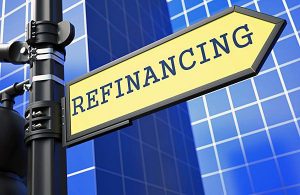
When the Federal Reserve raised short-term interest rates in December 2015 for the first time in nearly a decade, everyone predicted that mortgage rates would go up. It hasn’t happened. In fact, mortgage rates have been trending down for months.
With the Brexit vote rocking international markets and sending Treasury yields lower, mortgage rates are expected to decrease for the next six months or so and could hit record lows. Naturally, many homeowners are wondering if it’s a good time to refinance.
The first step is to decide what you want to accomplish by refinancing and understand how refinancing can help you achieve that goal. There are three general reasons to refinance your mortgage.
Reduce Your Monthly Mortgage Payment
As a general rule of thumb, refinancing is worth exploring if the current market rate is at least three-quarters of a point lower than your existing mortgage rate. Suppose you have a 30-year mortgage with an interest rate of 4.5 percent and owe $200,000. If you refinance to 3.625 percent, which is where rates are hovering these days, you could save close to $100 per month.
That’s the most popular reason to refinance a mortgage – to take advantage of a lower interest rate and reduce your monthly mortgage payment. Refinancing also accelerates the rate at which you build equity in your home.
We’ve been telling our clients who have a 30-year mortgage rate of 4 percent or higher that it’s a good time to have a discussion about refinancing. Of course, refinancing decisions aren’t based solely on rate. You have to look at your equity position, how long you expect to stay in your home, your PMI situation (if you have mortgage insurance), and other factors.
But make no mistake about it. This is a great time for many homeowners to refinance into a lower interest rate.
Pay Off Your Mortgage Faster, and with Less Interest, by Shortening the Term
Most people assume that if you refinance from a 30-year mortgage to a 15-year mortgage, the monthly mortgage payment will double. The amount you pay monthly in principle will increase, but the taxes and homeowner’s insurance won’t go up because you refinance. The total payment may increase, but not nearly as much as you probably think.
In fact, depending on the loan amount and how long you’ve owned your home, the additional cost may only be a few hundred dollars per month. Not only will you own your home free and clear sooner, but you could save tens of thousands of dollars in interest over the life of the loan.
For example, suppose you have $200,000 and 25 years remaining on your 30-year mortgage at 4.25 percent interest. If you refinance to a 15-year mortgage at 2.878 percent, your monthly payment will increase by $386. Even if you have 15 years left on your 30-year mortgage, it could make sense to refinance into a 15-year mortgage to take advantage of the lower rate.
Pay Off or Consolidate Debt
A cash-out refinance essentially replaces your existing mortgage and allows you to cash in on the equity of your home. You refinance for more than what you currently owe and receive the difference in cash. In most cases, the mortgage rate for a cash-out refi will be lower than your current mortgage rate.
A cash-out refi might make sense for qualified borrowers who have high-interest credit card debt, car payments or college loans. If you’re struggling to pay for your child’s college tuition or medical bills from an unexpected health issue are piling up, a cash-out refinance can help you get back on track.
Not only does a cash-out refi enable you to consolidate and pay off debt at a lower interest rate, but you can improve your credit score in the process. You can also deduct mortgage interest on your federal tax return.





